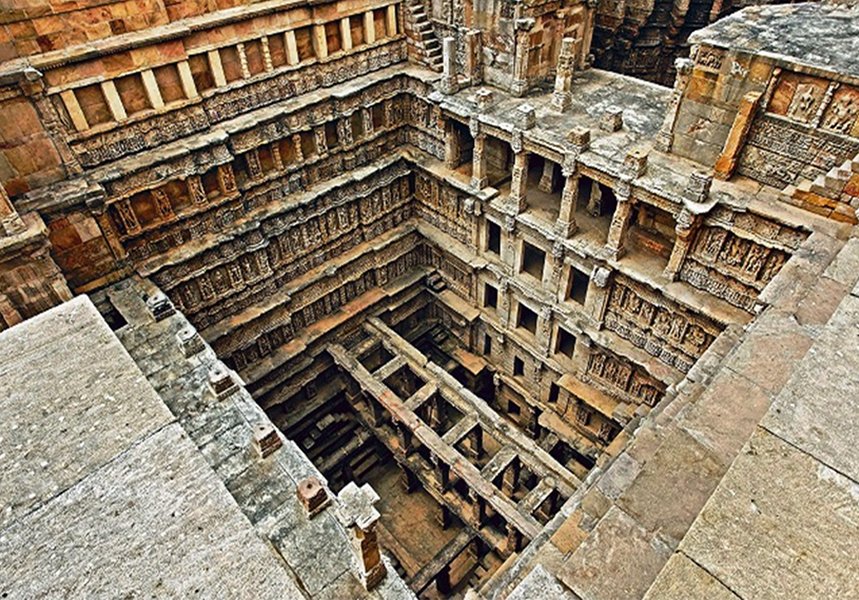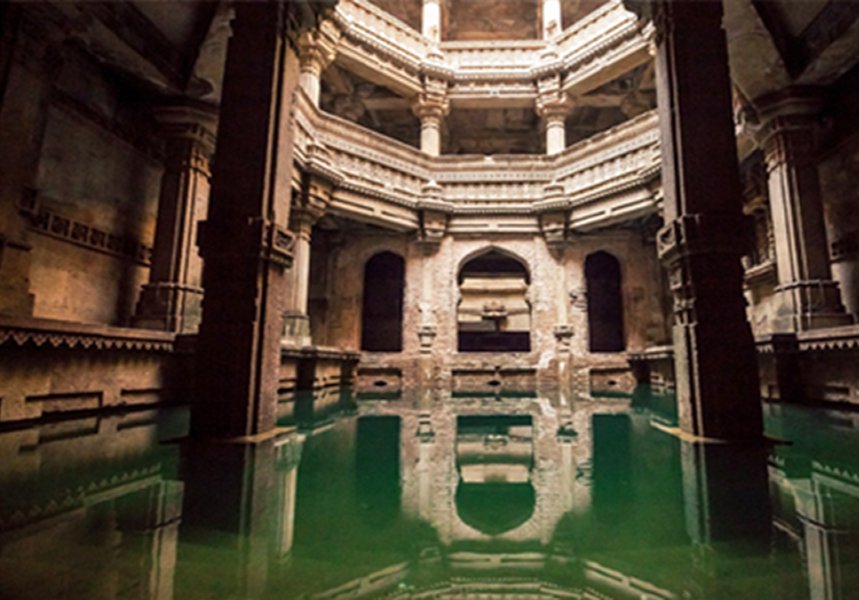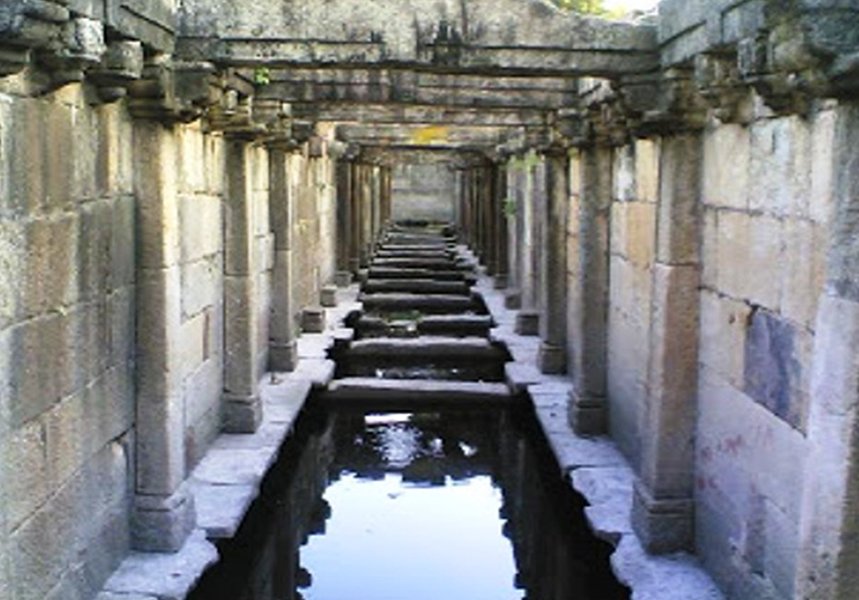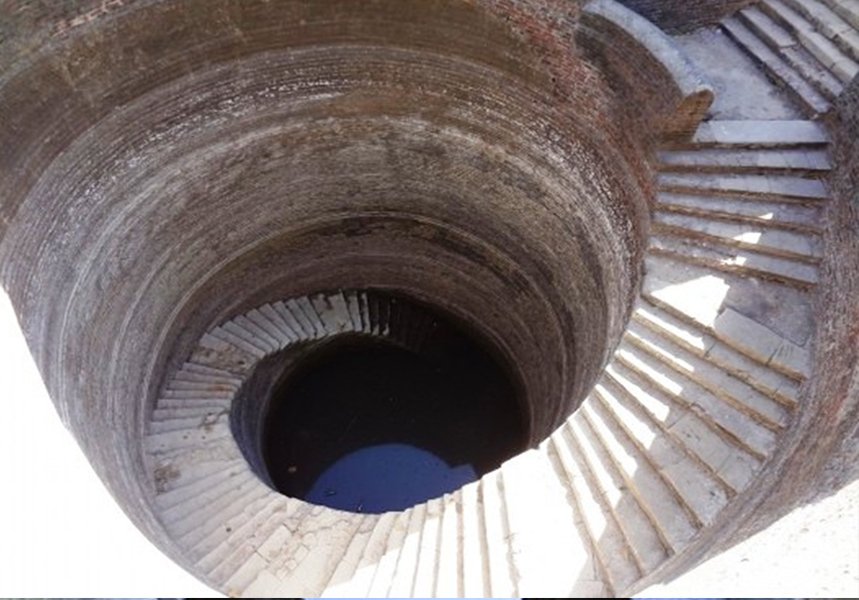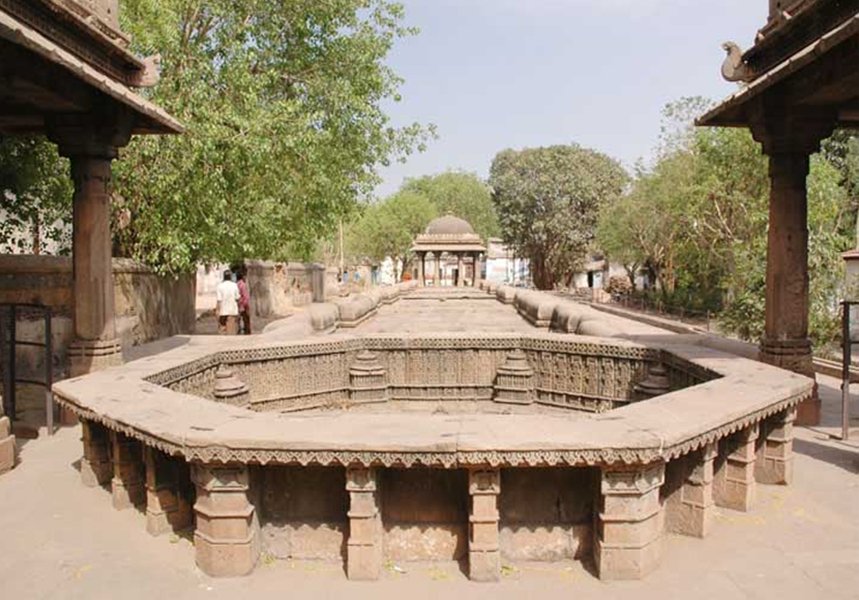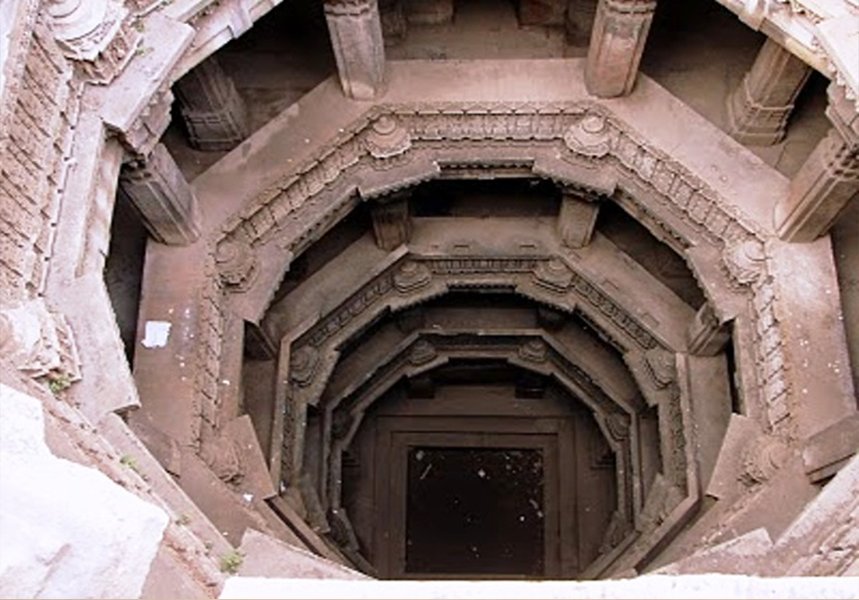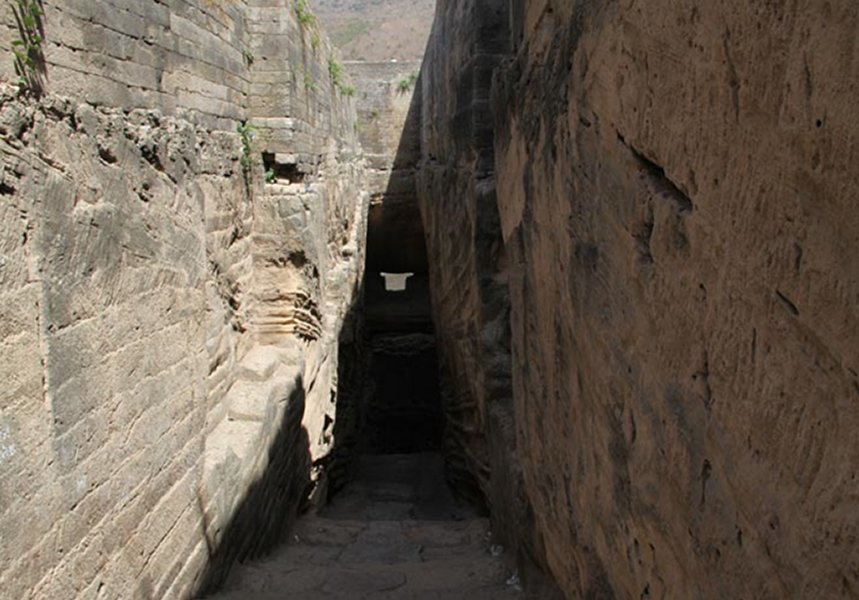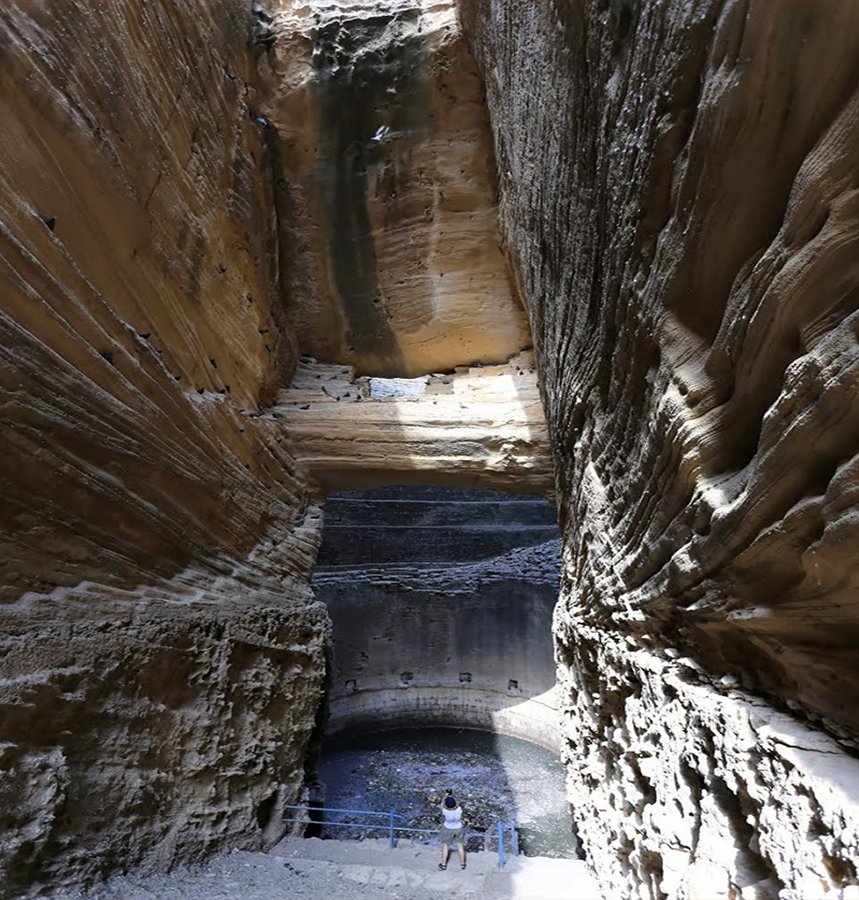Gujarat is called “A Land of Stepwells” for being a host to many earliest stepwell structures. Vav, as they are called here, makes the cavernous spaces for adequate water store, in the twin cities of Ahmedabad and Gandhinagar. The presence of such water conservation structures supports the effort of harvesting rainwater at a community level. Reviving these useful structures of brick and stones is a big step towards conserving rainwater and quenching planet’s thirst.
Indus Valley or Harappan Civilisation had some major settlements like Harappa, Mohenjo-Daro, Dholavira, Ganeriwala, etc. The presence of wells and other water conservation structures proves that the idea and need for preserving water, are deep-rooted.
Due to modernization, the demand for water has increased manifolds since these ancient eras. Now, it is important to conserve every possible drop of water. The collective efforts in this respect are seen to produce more cost-effective results. Use of stepwells or Vav, as they are called in Gujarat or baoli/bawri, being called in Rajasthan area, is one such method which collects and store rainwater on a larger scale and made it available for masses.
Stepwell is an underground well, usually built as five to six storeys structure with a long-stepped corridor descending a flight of stairs to reach the aquifer.
Ancient texts such as Rajvallabha mention four types of stepwells:
- Nanda – a stepwell with one entrance
- Bhadra – a stepwell with two entrances
- Jaya – a stepwell with three entrances
- Vijaya – a stepwell with four entrances
How stepwells of Gujarat promote community-based Rainwater Harvesting
Gujarat is home for around 100 odd stepwells. They are architectural marvels. Each of them is unique in design, focusing to prevent direct sunlight from penetrating the well, and thus reducing evaporation of water. The stepwells of Gujarat are usually made of brick, sandstone and lime mortar. The rainwater in form of direct stream or runoff makes its way deep into the well, at a controlled speed (due to the multi-storied or layered structure of the well).
The vastness of the stepwells is intended to provide enough water reserve for the area. The mesmerising carvings on the walls and design patterns of the stepwells showcase the artistic taste and culture of the era of their construction. The solid built of the stepwell can withstand the earthquakes of 7.6 on the Richter scale, thus ensuring continuous water supply even during the calamity. Due to the tiered structure, the temperature inside the well is 5 degrees lower than that of the outside.
Design of a typical stepwell in Gujarat
The ancient North-western part of India, particularly Gujarat and Rajasthan have been chosen for the construction of stepwells due to their arid environment. Most of these ancient stepwells are as old as 800 years.
Irrespective of their date of construction, four structures are essentially common in each of these stepwells:
- Todas – they are a pair of ornate pillars at the entrance to mark the location of the stepwell.
- Kutas – the landings between sets of steps for the purpose of providing a resting area.
- An ardhakuta – a supporting arch, without landing or pavilion.
- Well shaft – structure for storing water.
Some stepwells area designed with two well shafts; one for lowering the ambient temperature and the other for drawing water.
Reviving Some Prominent Stepwells
The excavated stepwells are very hard to maintain, due to erosion and other natural factors. A water never dries up here, they are a great solution for achieving collective rainwater harvesting.
Although each stepwell in Gujarat has its own significance, some of them are a bit more recognised and accessible. One such is the Saiyad Hazrat Jalaluddin ni vav in Gandhinagar. This well has apartment-like structure instead of traditional stepped layout. Three levels of the stepwell are stacked upon each other.
The Khodiyar Mata ni vav, located in Vadodara village, has been built within the basin of a lake. This helps in reduced excavation to reach the water table. Jal Sampatti Vibhag (Gujarat Water Supply and Sewerage Board) is working towards its conservation, to provide a resting place for the people. To bout the stepwells to survive in today’s environment, they have covered the entire structure in cement plaster, porcelain tiles, bearing the image of a goddess.
Rani-Ki-Vav (Queen’s Well) at Patan
The description of stepwells of Gujarat is incomplete without the mention of the most famous Gujarati Vav can Rani-Ki-Vaav at Patan. It is one of the masterpieces amongst other stepwells, built by Udaymati in memory of her husband Bhimdev I (1022 -1063) CE during the period of the Solanki dynasty. In 2014, UNESCO has recognised Rani-ki-Vav as one of the World’s Heritage Sites.
Rani-Ki-Vav measures approximately 64m long, 20m wide and 27m deep. The stepped tank is linked to a circular well. The walls are richly crafted with images of Lord Vishnu and his various avatars (reincarnation).
A 30 kilometer long tunnel can be entered by passing through the small gate present at the last step of the well. This tunnel served as an escape route by the kings during times of war.
Here are some other equally beautiful vavs of Gujarat.
Adalaj Vav, Ahmedabad
https://en.wikipedia.org/wiki/Adalaj_Stepwell
Gebanshah’s Vav, Champaner
https://en.wikipedia.org/wiki/Champaner-Pavagadh_Archaeological_Park
Helical Stepwell, Champaner
Dada Harir Vav(Stepwell), Ahmedabad
https://en.wikipedia.org/wiki/Dada_Harir_Stepwell
Adi-Kadi Vav, Junagadh
Navghan Kuvo, Junagadh
The abundance of the stepwells in Gujarat is a blessing. The only need is to revive them and use them as rainwater harvesting structures. The amount of water they can conserve can really help in eradicating the water scarcity issues of the place.
Call Chaitanya for all other needs of RWH products
Chaitanya Rain Harvest Product and Systems Pvt. Ltd. is promoting the idea of saving rainwater and protecting the environment, with its award-winning RWH products and services. We can be trusted for the products needed for borewell recharge structures, household RWH systems, community-based installation of RWH system and industrial RWH structures.


